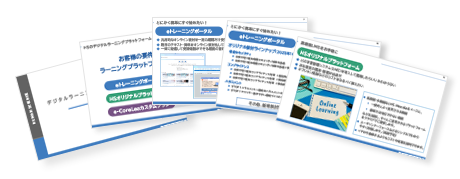2021.02.19
"Q&A at the seminar on "Articulate Storyline Usage Examples in the Medical Field: Editing and Translation of e-Learning Content and Challenges""
On January 20, 2021 (Wednesday), we held a web seminar on the theme of "Case Study of Articulate Storyline Utilization in the Medical Field: Editing and Translation of e-Learning Content" and had many participants.
Here, we would like to share the questions and answers received during the seminar.

Q What are the criteria for deciding whether to use Storyline or Rise when editing from a PowerPoint presentation?
A When using PowerPoint materials, it is often recommended to use Storyline or Studio.
The reason for Rise conversion in the case of a major equipment manufacturer was to expand the range of use beyond the conventional usage purposes and learning environments.
As it is a web-based content, it has features such as being able to optimize for smartphones (without reducing font size).
https://articulate.com/360/rise
Q Not a localization issue, but when I put Japanese in Storyline, the line breaks often become strange. Is there any solution?
A At the moment, measures such as using [Enter] for line breaks and [Shift]+[Enter] for line breaks without changing paragraphs are necessary. There is a possibility that these issues will be improved in future updates.
Q What should I do if I find a typo in the translation?
A The method may change depending on the timing of the error.
・Timing of translation manuscript:
It can be corrected in the Word manuscript and recorded in the translation support tool, and will be reflected in subsequent content.
・Timing after content creation:
Re-editing will be done on editing files such as Storyline. Further investigation is necessary, including the possibility of affecting other courses.
Q Is it necessary to change the font of the text in the content from Japanese font to English font when translating Japanese content into English?
A If there are no error displays or discomfort in the edited file or exported content, no changes are necessary. However, in reality, one of the Japanese fonts may be reflected, so we recommend replacing it with any English font for management and appearance. In addition, in Storyline, you can use the [Find/Replace] function to [Replace fonts] (font replacement) (adjustment is required for display collapse after replacement).
Q Frequently Asked Question: Is there a plan to introduce the function to export from Storyline to PowerPoint, as we often use the import function from PowerPoint to Storyline?
A At this point, there is little prospect of development.
Q It may be due to the PC environment, but in Storyline360, Japanese input cannot be directly entered on the slide and I am entering Japanese in a window that appears there.
A Please understand that this is the specification. Previously, it was in a format that could be directly entered, but there were issues such as being finalized during input, and it has been improved. Inputting in a separate window is a method that is widely used in other tools besides Storyline.
Q Is the method of directly editing and replacing the Japanese text with English used when creating an English version of Storyline content that has already been created in Japanese?
A If the translator and editor are the same person, it may be possible to directly replace the text on Storyline.
However, in the following cases, it is recommended to use the Translation function of Storyline (FILE → Translation) and translate using a Word document or similar.
・When translation and editing are done by different team members
・When using translation support tools to prevent variations in spelling (in this case, it is required)
・When the same or similar phrases are repeated in e-learning slides/narration/quizzes
・When there is a possibility that the same phrases will appear in multiple courses or future materials

Author:
Keigo Ryuno
Education Solutions Department, Consulting Unit
・Experience as a training instructor and web designer
・Engaged in education design and e-learning development
・Learning Designer (eLC certified)
・ATD International Professional Member
Contact Us:
Phone Number: 03-5321-3111
hsweb_inquiry@science.co.jp
Latest Blog
- 2024.04.02
- English Learning Using Moodle and ChatGPT












